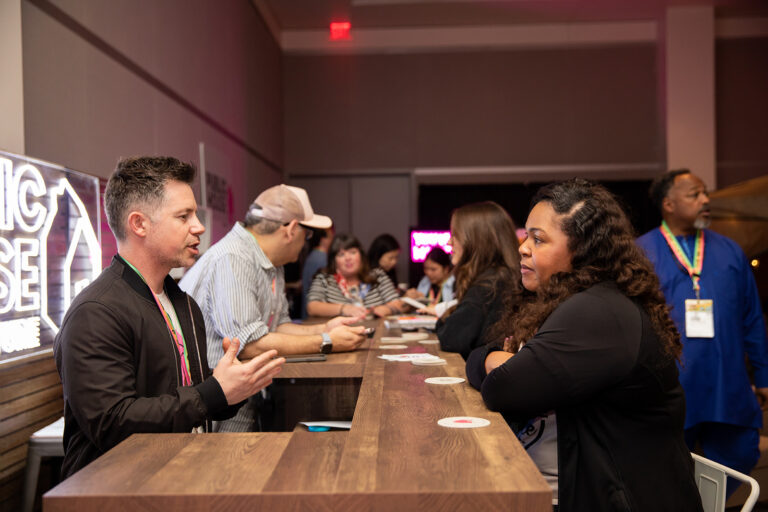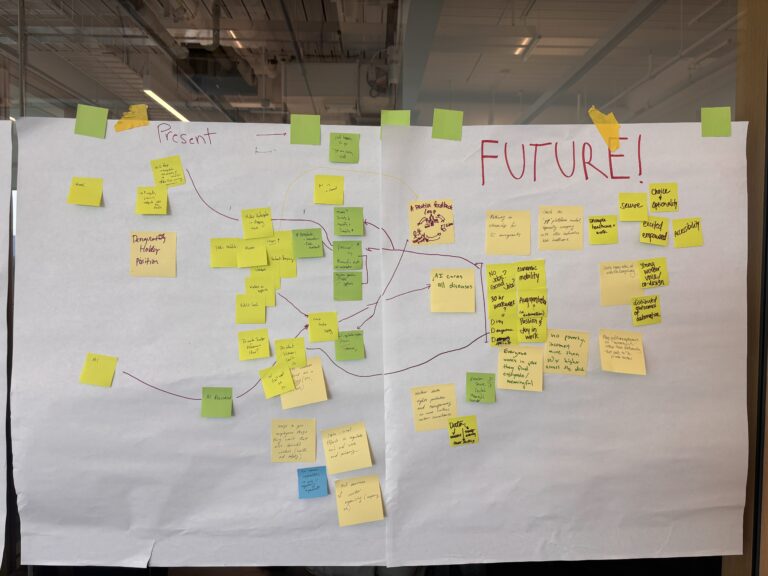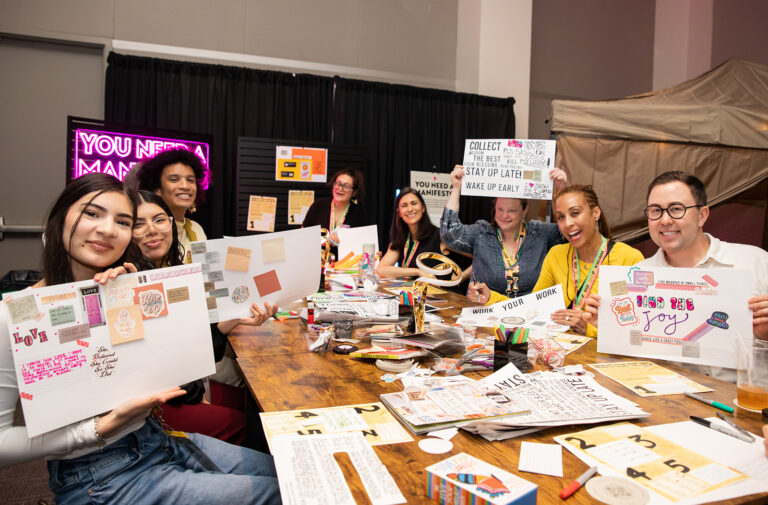
Sharing insights about short-, medium-, and long-term objectives for education-centered, community-reinvestment work in the Douglass Cluster in Atlanta
In September, we reached an important milestone in our community-centric, place-based grantmaking strategy in Atlanta. We hosted a day-long workshop to update civic leaders about the first phase of our education-centered community reinvestment partnership in the Douglass Cluster, an Atlanta Public Schools attendance zone, and began to prioritize action items for a second phase of work.
Our work in Atlanta is a partnership between Reimagine America’s Schools (RAS), the principal program of the National Design Alliance; Atlanta Public Schools (APS), and the City of Atlanta. It’s also a collaboration with a diverse set of community voices, including students, families, educators, residents, local nonprofit organizations, funders, and businesses. Siegel Family Endowment serves as a convener and facilitator, responsible for driving the collaborative process forward and bringing together groups that have traditionally operated independently.
The September workshop was no different. Participants represented many different perspectives, including local government, schools, civic institutions, philanthropy, and nonprofit organizations. As we’ve explored elsewhere, trust and buy-in from a wide range of stakeholders is critical, and the trust that’s been built over the last year between partners set the stage for the co-creation of meaningful solutions at the workshop.
To date, the work in the Douglass Cluster has involved 26 engagements, 215 participants, and 82 unique voices over discovery, ideation, and application steps of work. These processes have helped identify six areas of need and opportunity for further consideration, refinement, and ultimately implementation: community learning centers; early childhood education programs; extended learning opportunities; transportation and access; healthy food options; and STEM pipeline.
The participants in the September workshop built on this work by identifying immediate, mid-term, and long-term objectives, prioritizing and further developing the recommendations that emerged from the community. We’ve compiled three key findings that we drew from conversations at this day-long workshop:
Immediate action should focus on “low-hanging fruit,” where partnerships, resources, and assets already exist, or where there is particularly urgent need.
Participants in the workshop stressed that it was important for community members to see tangible progress towards achieving their goals, even if some of the more ambitious proposals would take considerable time to achieve. “Quick wins” can demonstrate the viability of the partnership model, and can help to strengthen relationships and build trust between groups that have traditionally been excluded or unheard in the policymaking process.
Across the immediate-term recommendations, participants focused on existing business, university and nonprofit partnerships, and critical existing programs. Each of these programs fits into existing funding categories and involves local nonprofit and community development organizations, reducing the time needed to build trust and governance mechanisms. For example, one group of participants identified existing internship, apprenticeship, and teacher training opportunities that could be leveraged to achieve some of the goals identified by the Douglass Cluster community.
In addition to working through existing partnerships, participants also prioritized areas of urgent need for immediate action. While these projects might not always yield immediate results, they’re required for many of the other recommendations to succeed. For example, several groups identified the need for attention to affordable workforce housing, arguing that this was a foundational element that would pave the way for educational opportunity, better health outcomes, and economic development.
Mid-term goals should reflect shared alignment, interest, and coordination between all actors.
Participants in the workshop agreed that it’s important to set the right conditions for achieving mid-term goals. In some cases that may mean building and strengthening existing relationships. That’s particularly important if there are leadership changes, as often occurs in government and schools. In other cases, it may mean periodically revisiting (and potentially redefining) shared goals with partners.
Priorities and resources shift, and it’s important that both mid-term goals and the strategies for pursuing them reflect the current views of stakeholders. Such reappraisals also provide an opportunity to capitalize on current trends and developments at the city level. For example, the city has prioritized initiatives that are aimed at youth, offering an important framing for the work in the Douglass Cluster.
Many mid-term goals are more complex than those pursued in the immediate-term. Participants repeatedly pointed out that pursuing such goals often requires new coalitions and approaches. For example, establishing better transportation options or on-site health centers cannot be pursued solely within a school. Instead, they require buy-in and commitment from a variety of partners. It’s important that those partners, goals, and strategies are developed prior to and revisited alongside the pursuit of mid-term goals.
Long-term goals include culture shifts that may require innovative or new approaches, significant resources, larger partnerships, and that are more holistic. Solutions must be designed for long-term sustainability.
When asked to identify long-term goals and actions, participants focused on approaches that would require significant resources, major shifts in thinking, or the involvement of many institutions and groups. All participants voiced the need to focus on sustainability of solutions.
For example, several groups of participants identified the need to better build work experience and connections with industry into K-12 education. Other groups cited the need to foster meaningful, trusting, and collaborative relationships between charter schools and traditional public schools in the Douglass Cluster. Efforts to address both of these cases could build off of existing work, but they would also require changes in curricula, academic standards, partnerships, and instructional practice, among other factors. Similar multivalent strategic approaches, such as tax breaks to encourage civic engagement by business or changes to teachers’ incentive structure, may take considerable time, effort, and coordination to achieve, but are worth pursuing nevertheless.
Workshop participants emphasized that immediate and mid-term actions can help build the trust and partnerships necessary to engage in broader strategies for pursuing long-term goals. Storytelling that narrates immediate and mid-term actions and the impact that they’ve had is a powerful tool for building momentum for long-term projects.
Next Steps
In the coming months, we’ll share more learnings from this project and describe how partners are working together to develop a plan for a second phase of work that moves from ideation to implementation.
In all of this work, we’re committed to putting community at the center by drawing on and responding to the existing resources, assets, and priorities of a variety of local partners and community voices.
In addition, we also realize that we need to establish accountability mechanisms if we are to give these projects the best possible chance of success. These may include governance structures to facilitate implementation of prioritized initiatives.
We look forward to sharing what we’re learning, and invite you to be a part of the conversation. If you’d like to get in touch with us, please contact us here.





